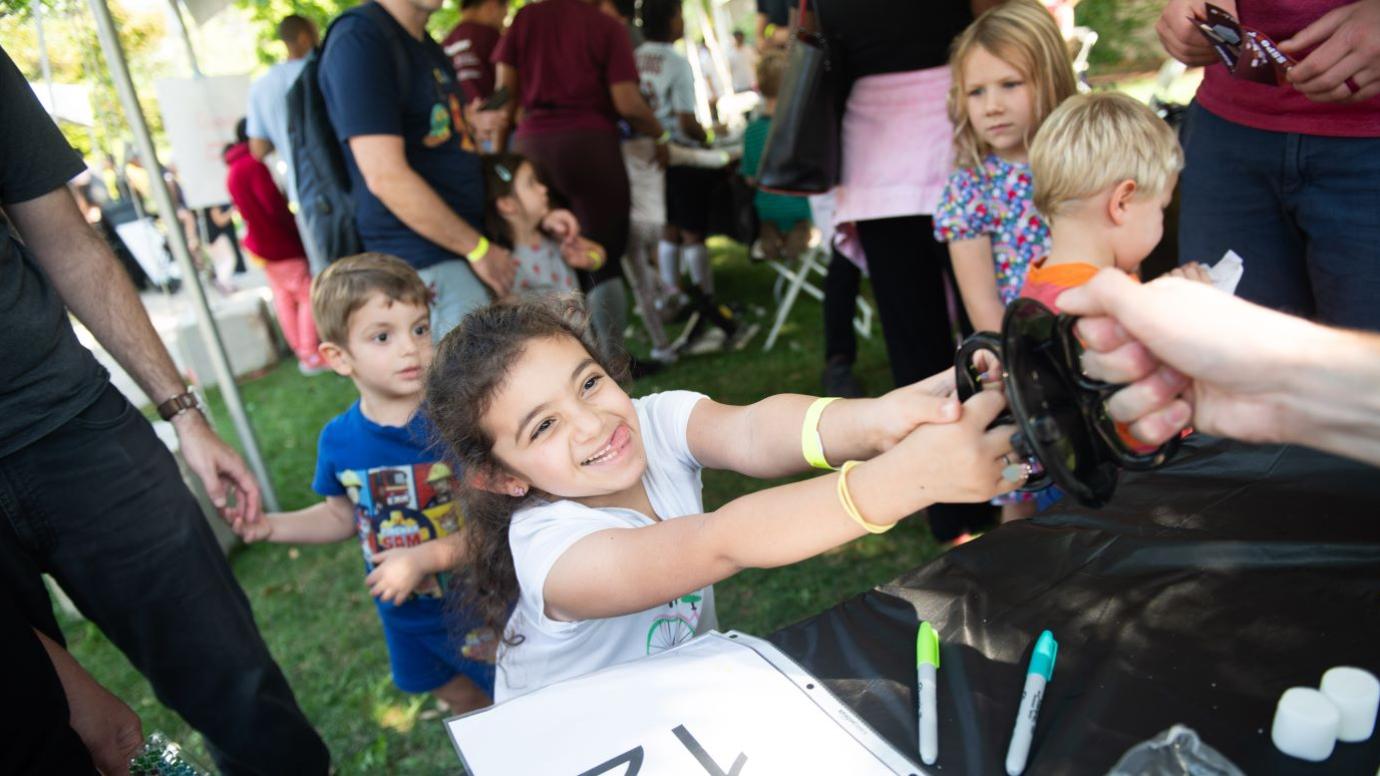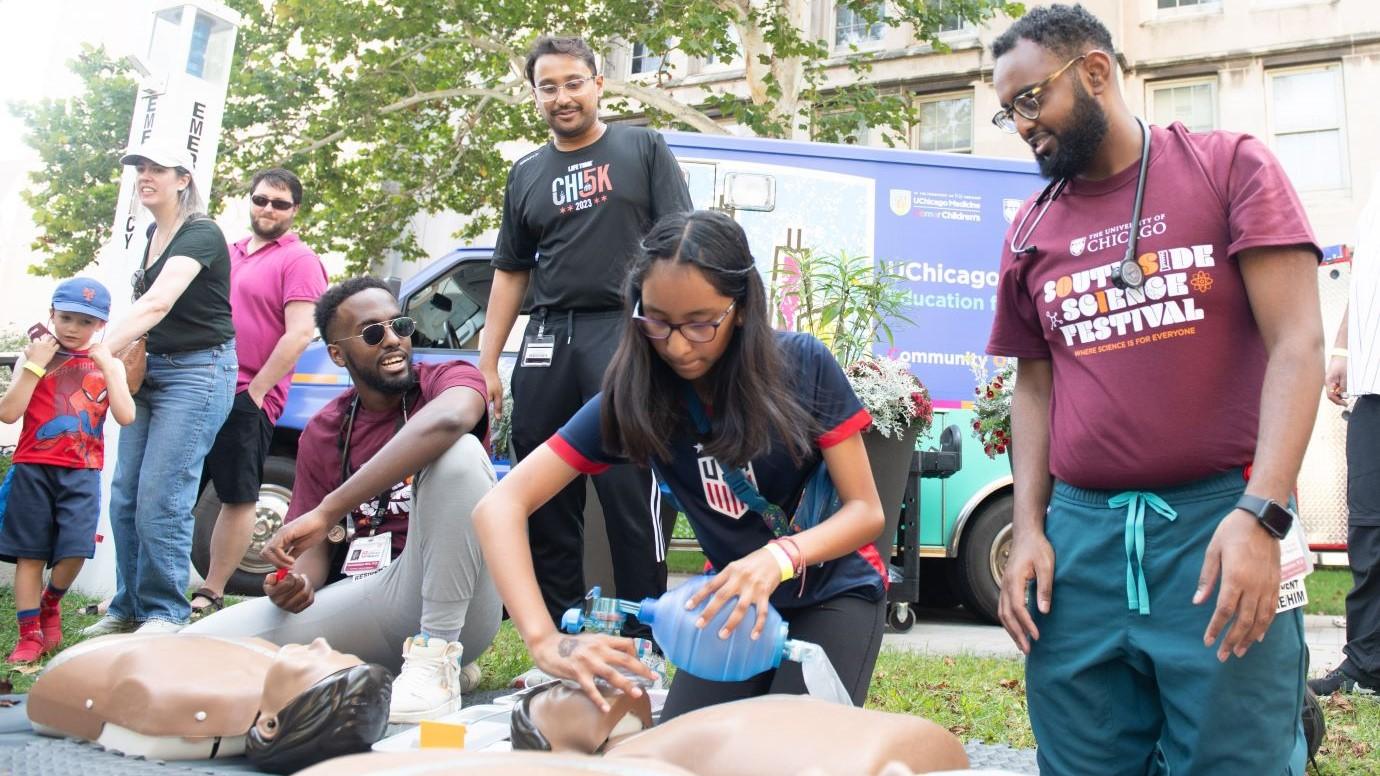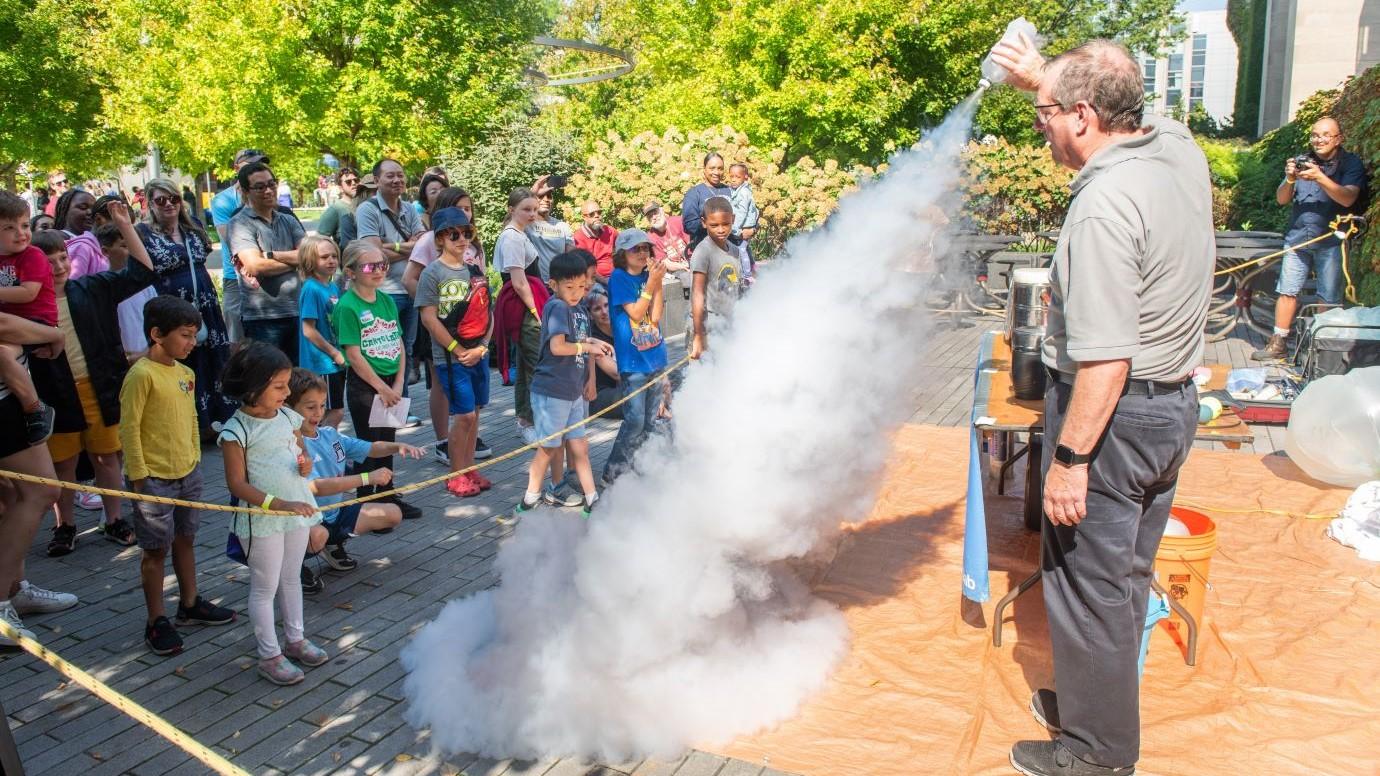Odell Mitchell’s 8-year-old daughter has been showing an interest in science lately, so when the Bronzeville resident heard the University of Chicago was bringing back its South Side Science Festival, he brought his daughters, his sister and his mom to check it out.
As a single dad, Mitchell says he’s always looking for engaging family-friendly activities across the city, and last Saturday’s bustling event didn’t disappoint. The festival featured more than 100 interactive science demonstrations led by 500 scientists and drew more than 4,500 attendees to UChicago’s campus.
“Getting to take things that people talk about and then have them be real has been wonderful,” Mitchell said as his two children worked with UChicago scientists and students to create suncatchers using pipettes nearby. “We were just at the immune system table, and we were talking about sneezing and masks and just watching my daughter go, ‘Oh! That makes sense!’ was great.”
Spread across the science quads on campus, the daylong festival explored the ways science impacts our daily lives, offering hands-on lessons for all ages—ranging from dancing robots and 3D printers to a butterfly lab and CPR training.
The second-annual event was co-organized by the Biological Sciences Division, Physical Sciences Division, Pritzker School of Molecular Engineering and the Office of Civic Engagement.

“The biggest takeaway from the South Side Science Festival, we hope, is that kids and their families begin to see themselves in STEM and understand how science is applicable to everyday life,” said Neubauer Family Assistant Professor of Human Genetics Maanasa Raghavan, who served as a co-faculty organizer for the festival alongside Assistant Professor of Molecular Engineering Hannes Bernien, Neubauer Family Assistant Professor of Chemistry Sarah King and Associate Professor of Chemistry John Anderson. “We hope they see the diversity of UChicago scientists as well, gain an understanding of the diverse STEM careers available and hopefully see themselves driving the science five to 10 years from now.”
Older kids, teens, and adults at the festival were able to take part in a variety of more in-depth activities throughout the day, including panels with UChicago faculty and community partners on artificial intelligence, STEM careers, the origins of the universe and more. There also were tours of UChicago labs and facilities and a Science Slam that pitted five UChicago graduate students in a competition for the most engaging presentation.
Exposure to potential STEM career pathways, through the festival’s programming and other ongoing University programs, can be especially powerful for those who don’t always have an opportunity to engage with these sorts of topics. DarLisa Meaders, a health education coordinator who lives in the Avalon Park neighborhood on the South Side, noted she found the festival to be particularly meaningful because it attracted many local attendees who have been historically underrepresented in the sciences.
“It’s very important to have this on the South Side because, like I tell my niece and my younger sister who’s 16, you can’t be what you don’t see,” Meaders said. “We need to make science more accessible to everybody and this was great.”

Creating those kinds of pathways for South Siders is also central to the broader Inclusive Innovation initiative UChicago is leading in partnership with the University of Illinois Urbana-Champaign, Argonne National Laboratory and Fermilab. The initiative aims to engage local students, educators, and workers and connect them to the city’s growing scientific ecosystem, thereby helping to generate a diverse talent pipeline in the sciences and spur economic growth on the historically under-resourced South Side.
Zanette Sanders, an electrical engineer who lives in the city’s Chatham neighborhood, said she headed straight to the electromagnetic area when she arrived at the festival to “get my geekdom on” but left the event brimming with ideas to bring back to the local community action council she chairs. Experiencing the festival, Sanders said, was also a way for residents of neighboring communities like her to engage with the University campus and community on a deeper level.
“Institutions that are right in the heart of the community need to bring the community to them so that they can see it. Because a lot of times, we’re driving past, but we don’t stop,” she said. “To bring this event into the quad and have real scientists there, to be able to walk where college students walk, to see a university campus, see ‘Wow, this is where I could go to school,’ it’s about seeing the future and just having a light bulb go off that says, ‘Wow, this is within my realm of possibility.’ This is my community; this should be my university. So, to me, this was a day that broke down that barrier.”

Across the quad, outside the Crerar Library, 17-year-old Brooke Whitehead was showing off a detailed poster she’d just given a presentation on about cosmic microwave background radiation.
Brooke, a senior at Gwendolyn Brooks High School who lives in the South Shore neighborhood, participates in UChicago’s Space Explorers science enrichment program and was excited to see how many different people had gathered at the festival to celebrate all things science.
“Learning about the start of everything, how stuff formed, that’s what I like about science,” Whitehead, who’s interested in pursuing a career as a forensic scientist, said. “It gives you information about how stuff is. It gives an explanation. It gives you understanding. It’s facts you can look back at and be like this is because of this. It answers questions. And an event like this is important because science is cool.”
This story originally appeared on UChicago’s civic engagement website.







